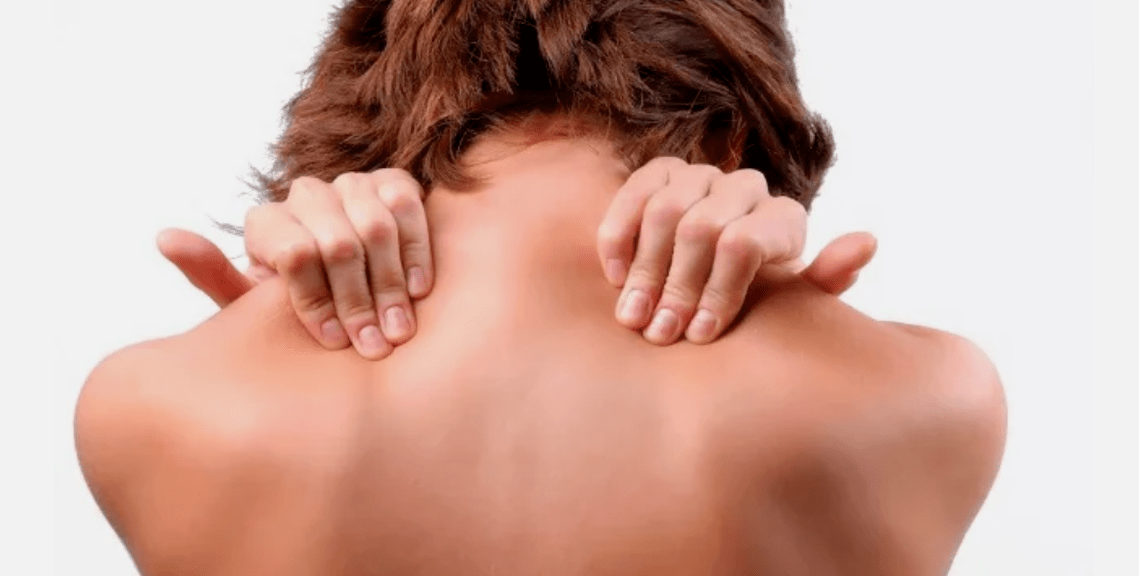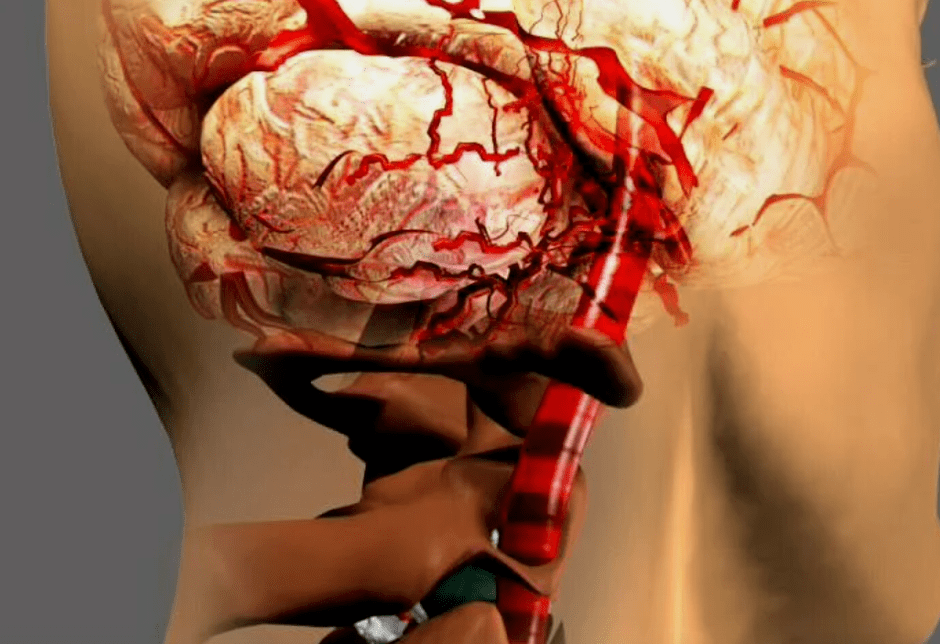
Cervical osteochondrosis is a disease in which the pulp between the vertebrae, acts as a shock absorber, becomes an ossified cloth.
Pain in the neck?Dizzy?Crunch?Cervical shots?"Is osteochondrosis true - actually ..." - you think, get a request on the internet.No panic!Cervical spinal osteochondrosis is not a sentence, it can be prevented, slowed and cured.How?Let's know.
Identity
Unfortunately, cervical osteochondrosis is a quiet and dangerous disease.You cannot suspect its existence, so at one point you feel muscle cramps and pain in the neck.Often, dizziness and numbness of the limbs are added.
The cause of the phenomenon that is not related to the complex osteochondrosis properties.
What is osteochondrosis: from the public ...
Osteochondrosis is a spinal disease in which the intervertebral disc is damaged, performing the role of shock absorber.Ordering and not speaking, they provide spinal elasticity and elasticity, while allowing the body to maintain balance in the process of movement.With their partial or complete destruction, this balance is lost, which inevitably affects one's motor activity.The cause of such changes often wears physical and deformation of the disc or, easier, its "aging".At the same time, our whole bodies can serve us for years.
It is generally accepted that osteochondrosis is an age disease.However, in recent years, the disease has been "younger": in the risk zone there are 25 years and younger.All mistakes are the inactive lifestyle, lack of nutrients and uneven physical activity in the body.Moreover, statistics show that women are sick more often than osteochondrosis.First of all, this is due to the features of anatomy and emotional background.However, the disease is more difficult in men.
... to private - cervical osteochondrosis
Cervical spinal osteochondrosis is the most common.The fact is that it is in the neck that the majority of vessels and nerve endings are concentrated, while the vertebrae here is much smaller (about half compared to the lumbar department), and the muscle corset is weaker.
Together with high mobility and the proximity of spinal cord, our body's neck needs attention.
Why is cervical osteochondrosis dangerous?

Unfortunately, the danger of cervical osteochondrosis is allowed anatomically - the vertebral artery passes through the cervix, which pats the center of the brain important to the back of the brain.And any damage and infringement of blood supply can be irreversible, from the curvature of the spinal pathology (neck lordosis) to the loss of motor capacity, stroke and even death.
Fortunately, it is almost impossible not to see the symptoms of disaster that will occur: problems with coordination, strong deterioration in vision and hearing, dizziness and loss of consciousness ...
If, coupled with normal cervical pain, you see these signs on yourself, consult your doctor immediately!
Diagnosis and symptoms of cervical spinal osteochondrosis
Osteochondrosis is a serious disease, and only a qualified specialist, that is, a vertebrologist who specializes in solving problems with the spine, orthopedis or neurologists can diagnose it.
The most appropriate way to diagnose cervical osteochondrosis: X-ray, computed tomography (CT) and magnetic nuclear resonance (MRI), which allows not only symptoms of cervical osteochondrosis, but also other changes in the body.
When some of the following symptoms appear, seek professional advice to your doctor immediately.
- tedious pain, pain, intense neck and nape
- Cervix, crunch when turning heads
- dizzy, "lid" in front of my eyes, fainting
- headache
- Nausea, vomiting
- Numbness of limbs
- noise in the ear, visual disorder
- General muscle weakness
Pain for osteochondrosis is often painful, given to the head and accompanied by numbness of the arms and legs.This is because, first of all, by pinching the nerve endings and increasing intracranial pressure.
The nature of osteochondrosis

As with the disease, spinal osteochondrosis has several stages of development.
For a better understanding of the processes that occur in the body, we recommend first understanding the structure of the disc itself, and then analyzing the changes that are characteristic of each stage of osteochondrosis.
The vertebral disc itself consists of several parts: the Pulpo -Bunken jacket nucleus (inside), fibrous rings (outer shell) and hyaline cartilage that separate the disc from the vertebra and perform the power function.
Pulpic nucleus is rich in water, and it is responsible for depreciation, adapts to the center of gravity, squeezing and moving like a mercury ball.The fibrous ring around it, on the other hand, has a solid structure and consists of interrelated fibers.Because the main task of the fibrous ring is to protect the core from the damage, it is the one who takes the "shot" by itself at a high load.
Level of osteochondrosis
Traditionally, four stages of osteochondrosis are distinguished.
Cervical osteochondrosis in the first stage - premature stage
This is the early stage of the disease when "drying" the disc: its height and elasticity are reduced.
At the same time, there have been no structural changes - however, as well as symptoms and, thus, complaints.You may not feel uncomfortable;The only "harbinger" can be a morning stiffness and a salt deposit around the neck.Although, you see, in our way of life, this sensation is quite normally.
Cervical osteochondrosis of the 2nd degree - the beginning of structural change
Here the irreversible changes begin on the pulpic core - necrosis and destruction caused by infringement of the metabolic process - simultaneously with the formation of cracks in fibrous rings.
The body begins to send the sauce signal in the form of a sharp pain in the neck, decreases resistance, and rapid fatigue.
Osteochondrosis cervical degree to -3 - progressive disco
The tension of the fibrous ring is interrupted, as a result the pulpoose core "stands out" into the spinal cord through the formed crack.
If the complete rupture of the external shell does not occur, the intervertebral disc can still be restored.This process is called spinal cord and is successfully treated by patients.At the same time, you experience persistent pain in the neck and all back, walk during load and stay in an uncomfortable position.
In the case of complete destruction of fibrous rings, problems with coordination, dizziness, and nausea are added to pain;There is a risk of defect.It needs to be quick to seek medical help!
Osteochondrosis of the 4th degree cervical
As a result of irreversible processes between vertebrae, growth (osteophytes) is formed that prevents joint movement.Pulpoose nucleus is replaced by scar tissue, injured nerve endings, antidote may be only surgery.
Paradoxically, in terms of well -being, you can feel significant improvement - the spine again gains the ability to take load.However, limited pain and motor activity will only be intensified.
The cause of osteochondrosis

Unfortunately, talking about the causes of difficult diseases such as osteochondrosis, you need to remember many factors: from external to physiological tendency.
How to understand that you are at risk?Mentally put the opposite check mark of each eye that is right for you and your lifestyle.
- Do you suffer a spinal cord injury?
- Is weight loss (obesity level)?
- Described by bad habits (smoking, alcohol use), normal stress?
- Do you have chronic infectious diseases, metabolic disorders?
- Is your work related to hard physical labor?
- Have you been diagnosed with posture and/or flat feet?
- Do you have a normal burden on the spine?
If at least one of the questions you answer in the affirmative, unfortunately, you are at risk.This is bad news.But there are also good ones: cervical spinal osteochondrosis can be stopped, cured and even prevented by timely diagnosis and the onset of proper prevention.
How to prevent osteochondrosis
There are some precautions we recommend to observe the game "in front of the lead" with cervical spinal osteochondrosis.
Step 1. Wake up!
Do you live an inactive lifestyle?Inactivity, hours of staying on computers, irregular and lack of nutrients, lack of sleep, stress ... is normal?
All of this contributes to the "stagnant" process in the body and creates an early level of osteochondrosis.
To prevent the development of the disease, it is reasonable to approach your daily routine, take a regular rest (every hour for five minutes) and keep your health more.Believe me, you'll soon say "thank you" yourself!
Take the rules: Put a reminder (or in the case of "ignored" - alarm clock) so you don't miss the time in the joy of work ... when you just have to get up and go.
Step 2. Keep your own facilities!
With convenience, we mean the physical signals provided by the body.Listen and take care of yourself!
First, avoid excessive and unreasonable burdens.If you are used to the gym, the dosage weight, do not miss the warmth and follow the training of the training.
Second, give up uncomfortable shoes.We do not urge to get rid of your favorite shoes or output shoes - let them stay for special occasions.It is important that these "special cases" are not the norm of your life in 24/7 mode."For everyday" choose shoes with comfortable blocks that do not cause discomfort and do not affect posture and gait.
Third, do not store furniture and sleep accessories.If office chairs are not appropriate for you, agree to replacement or maintain your own comfort.Furthermore, this one -time investment can save you from serious normal spending.
Use only the right furniture anatomy that reduces the load on the spine.For a home, choose a bed with hard mattresses and a comfortable pillow in accordance with density and height.Anatomy or normal - you make a decision, as it depends on the characteristics of your body.
Step 3. Don't forget about prevention!
New - means armed, right?
If you experience fatigue and pain regularly in the neck and back, or, rather, want to avoid it, we recommend a simple set of exercises, especially effective in the early osteochondrosis (premature) stage.
Gymnastics for cervical osteochondrosis

You can do gymnastics for cervical spinal osteochondrosis at home and continue at work.
- Sit down evenly, straighten your back, rest your hands and lower it through the body.Turn your head alternately to the right and left, about 90 degrees (or how many joints are allowed).Move smoothly, avoid the movement.
Make 8 repetitions for the first time, and in the future gradually increase the turn of turns to 15 in each direction. - In the same position, tilt your head forward, press the chin to the chest, and back, taking the back of the head to the back of the neck.It also starts with 8 repetitions and increases to 15 times.
- Next, go to your shoulders.First, lift both shoulders (towards the ear), hold for a few seconds and lower it back.So 8 repetitions.
Then move your shoulders alternately: right up, left, switch - 8 repetitions. - Put your palms on your forehead and press with a tilt at the same time.Pause 10 seconds - and so on 8 times in a row.
After the end of the complex, be sure to massage the neck to relieve the voltage.
Attention!If you feel uncomfortable during your training, consult a specialist and be careful about the load dose!
Cervical osteochondrosis: treatment
Treatment of cervical spinal osteochondrosis can be narrow or complex, combining several components at once.
Physiotherapy

Physiotherapy for cervical osteochondrosis is a local effect method directly on the focus of inflammation.Therapeutic effects are achieved due to increased blood circulation and metabolic processes.The pain in the neck stops, the severity of the symptoms decreases.
There are many options for physiotherapy for cervical osteochondrosis: electrotherapy, exposure to magnets, lasers, water and mud procedures, electrophoresis, acupuncture, and moderate heating of inflamed areas.
Before you sign up for the procedure, be careful to study contraindications and consult your doctor.
Massage
With cervical osteochondrosis, the collar area massage helps well.You can sign up for a session to Masseur or do your own massage using professional vibration massagers.
Medicine and diet
Among the most commonly used in osteochondrosis drugs are anti -inflammatory drugs, painkillers, antispasmodic, antioxidants, and drugs aimed at improving blood circulation and metabolic processes.The spectrum of drugs includes tablets, creams, ointments and solutions for intramuscular injection.
Remember, only a doctor can choose the medicine efficiently!
A balanced diet will help improve the effectiveness of the drug and improve the overall tone of the body.Limit the use of fat, spicy, smoke food, salt.Give priority to vegetables and fruits, well -cooked meat, fish and dairy products.Add nuts and honey to the diet.And drink more liquid.
Although osteochondrosis does not threaten you, a balanced diet will have a positive effect on general well -being and body conditions.You will see, after a few weeks you will see incredible changes!Check your own experience!






















